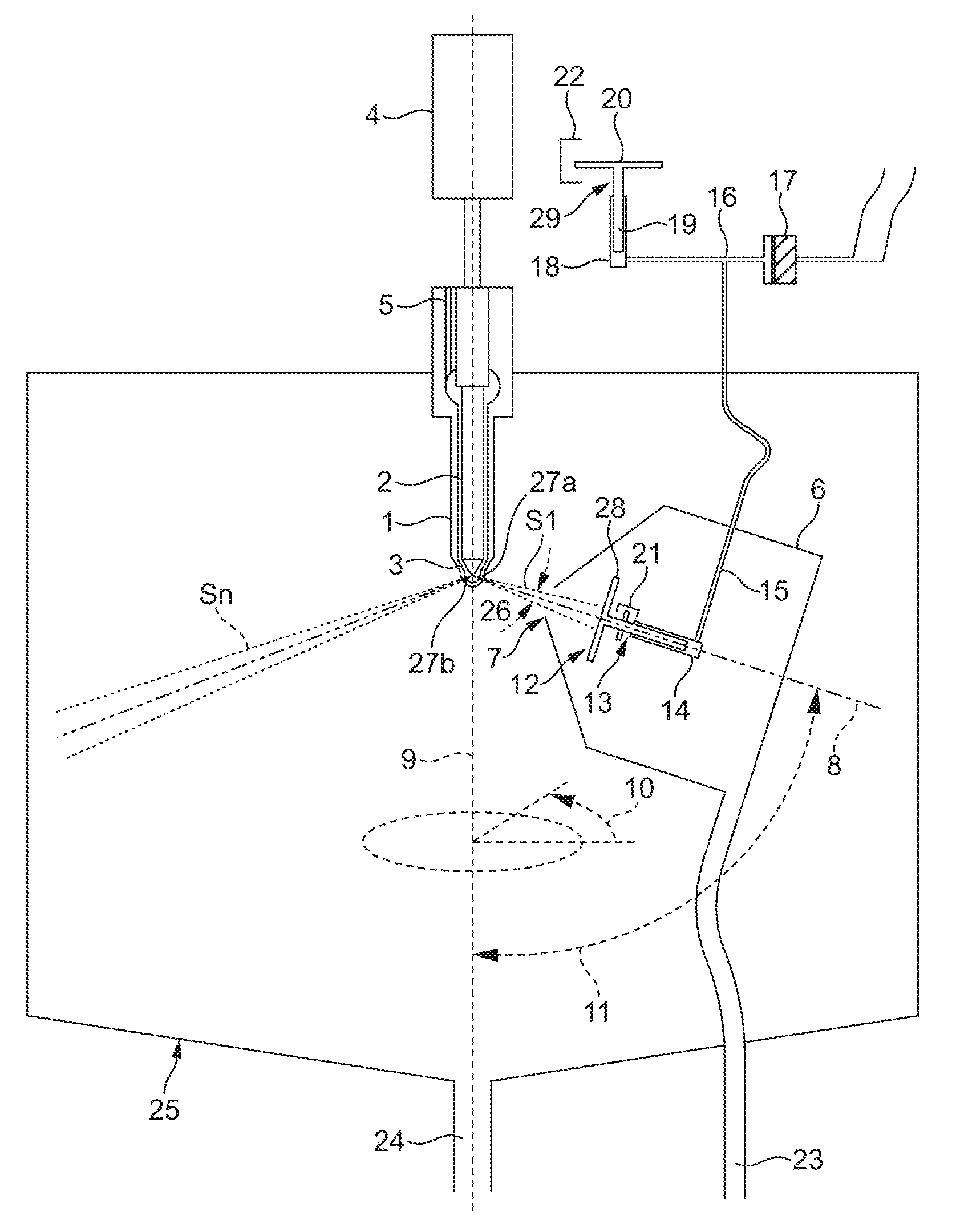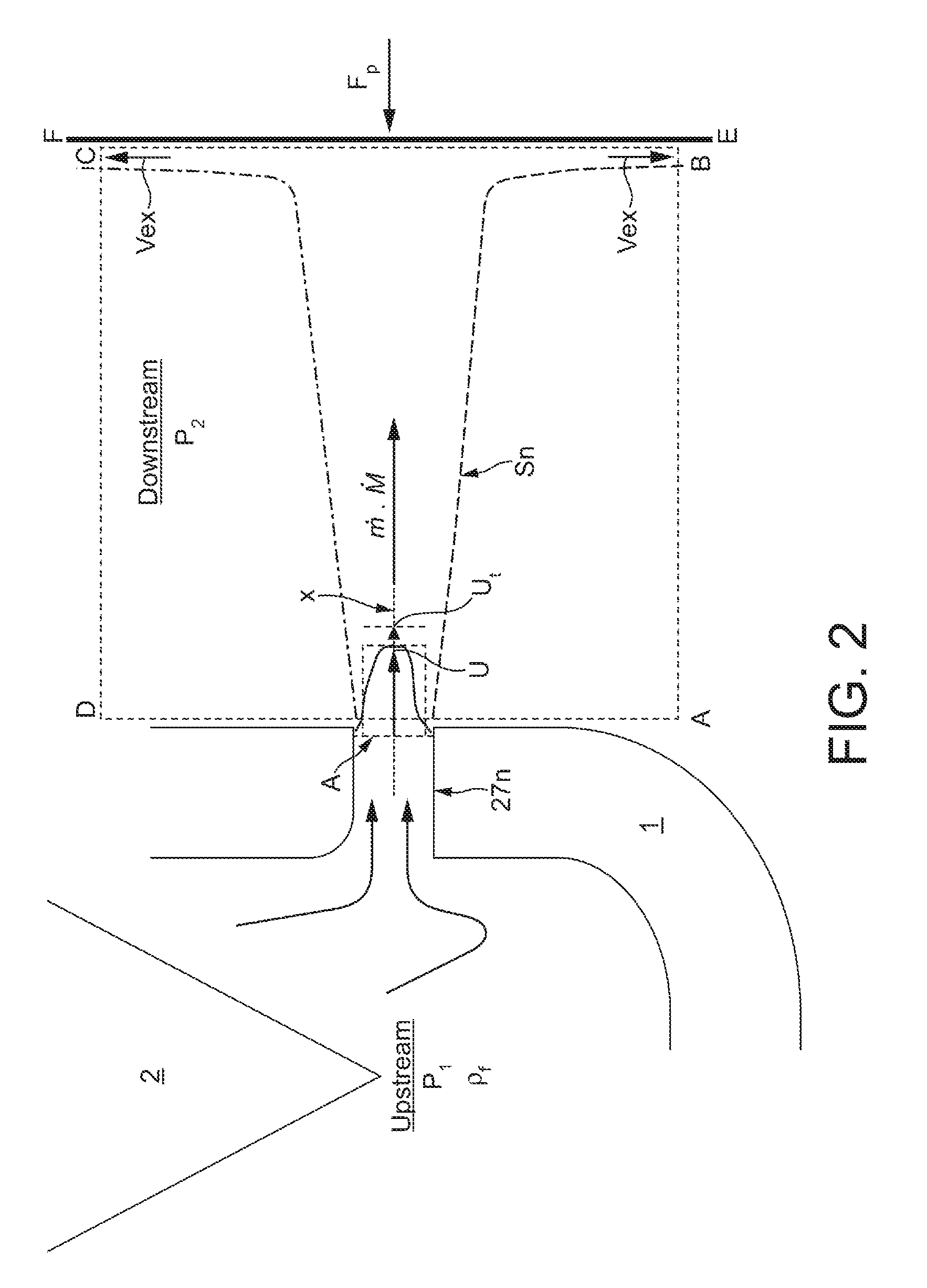Apparatus and methods for testing a fuel injector nozzle
a fuel injector and apparatus technology, applied in mechanical apparatus, machines/engines, instruments, etc., can solve the problems of increasing the frequency of soot emissions, the absolute accuracy of measuring the spray force, and the inability to meet the standard required of modern nozzle designs, so as to reduce vibration and minimise the static friction of the plunger within the bore
- Summary
- Abstract
- Description
- Claims
- Application Information
AI Technical Summary
Benefits of technology
Problems solved by technology
Method used
Image
Examples
Embodiment Construction
[0062]Referring to FIG. 4, a section through a test rig of an embodiment of the invention is shown schematically. A sample multi-hole fuel injector nozzle 1 is shown mounted on the test rig. The fuel injector nozzle 1 is mounted within a fuel injector body (not shown in FIG. 4), and extends into a main chamber 25. Fuel is supplied to the nozzle 1 via an inlet drilling 5 in the nozzle 1. An electronic control valve (not shown in FIG. 4) is provided for controlling fuel flow to the nozzle 1.
[0063]A plurality of spray hole outlets are defined in the nozzle 1, of which a first spray hole outlet 27a and a second spray hole outlet 27b are indicated in FIG. 4. The nozzle 1 comprises a nozzle needle 2, which is moveable relative to a needle seat 3 for controlling fuel flow through the spray hole outlets 27a, 27b. The spray hole outlets 27a, 27b are closed by the nozzle needle 2 when the nozzle needle 2 is seated, such that fuel flow through the spray hole outlets 27a, 27b is prevented. An i...
PUM
 Login to View More
Login to View More Abstract
Description
Claims
Application Information
 Login to View More
Login to View More - R&D
- Intellectual Property
- Life Sciences
- Materials
- Tech Scout
- Unparalleled Data Quality
- Higher Quality Content
- 60% Fewer Hallucinations
Browse by: Latest US Patents, China's latest patents, Technical Efficacy Thesaurus, Application Domain, Technology Topic, Popular Technical Reports.
© 2025 PatSnap. All rights reserved.Legal|Privacy policy|Modern Slavery Act Transparency Statement|Sitemap|About US| Contact US: help@patsnap.com



